One of the most common barefoot running injuries is top of foot pain. How does this happen? One reason is you might be over-engaging your toes during the push-off phase of running. Put differently, you may be using your toes too aggressively to launch your body forward at each step, and that alone will cause toe injury and top of foot pain, but this can be easily corrected because as it turns out, you shouldn’t be using your toes in that manner, at all!
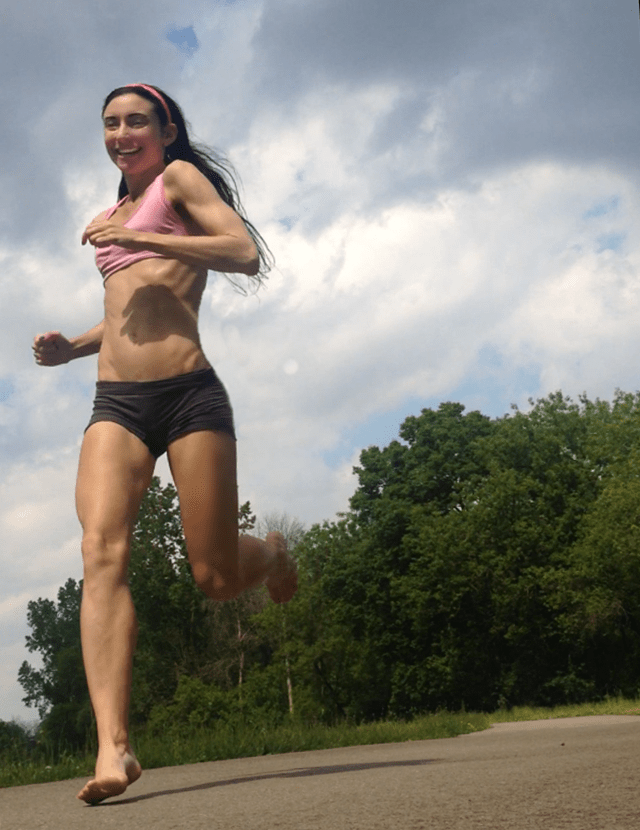

In running, using your toes too much for propulsion was found to cause aberrant plantar nerve connectivity, resulting in toe pain and injury. In simple terms, forcefully using your toes for push-off hyper-stretches the nerve fibres that line the toes and forefoot.
Whats more, aggressive toe push-off to initiate flight is a common mechanical trait in heel strike running because toe-push off is the only mechanism to drive forward momentum with that running style.
Another reason heel strike runners rely on their toes to launch the body into the next step is because the torso is automatically pushed back at heel strike, shown below:
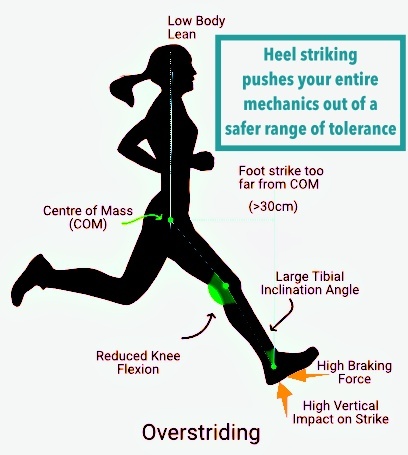

More specifically, the common mechanical traits of heel strike running that damage the toes are more clearly outlined below:
- At heel strike, the center of mass (which also the torso) is kept posteriorly relative to foot strike position.
- To keep the center of mass traveling forward, the foot rolls heel to toe (shown below), then the toes propel the body forward.
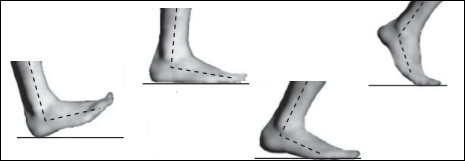
- The downside of this is the foot is in an extreme position that affects the conduction properties of the peripheral nerves in the feet, shown below:
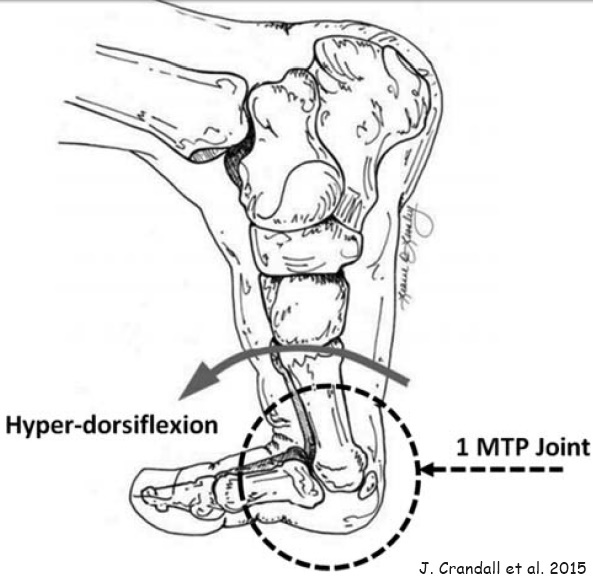
A study by Smith and Dahm (2001) observed that toe propulsion was facilitated by extreme toe dorsiflexion (shown above) which compresses, stretches and demyelinate the plantar interdigital nerve located under the inter-metatarsal ligament! What does this mean?

It means that most nerves have myelinated (myelin sheath) axons –a component of the nerve that helps send signals strongly and quickly to other nerves. Essentially, the myelin sheath is important for optimal conduction velocity of nerve signals whereby the thicker the myelin sheath, the faster, more secure a signal is.
- When there are disruptions in the myelin sheath (i.e. demyelination), signal velocity and quality are significantly weakened, delayed or blocked, therefore the central nervous system misses out on key information from the affected area.
Ultimately, toe propulsion leads to low or aberrant nerve connectivity in the feet, and subsequently all the stresses and straining from forceful toe dorsiflexion leads to interdigital neuroma due to entrapment of the interdigital nerve.
How to Avoid Toe Injury: Forefoot Strike and Lean Slightly Forward
The good thing about forefoot running is it keeps your entire body posture in a safer range of tolerance (shown below) whereby landing with a forefoot strike naturally causes the knee to bend and the torso to shift slightly forward. Its the combination of the extra knee-bend and forward lean of the torso that occurs at landing that creates a ‘free-fall’ effect where the toes and the knee are relieved from being over-worked.
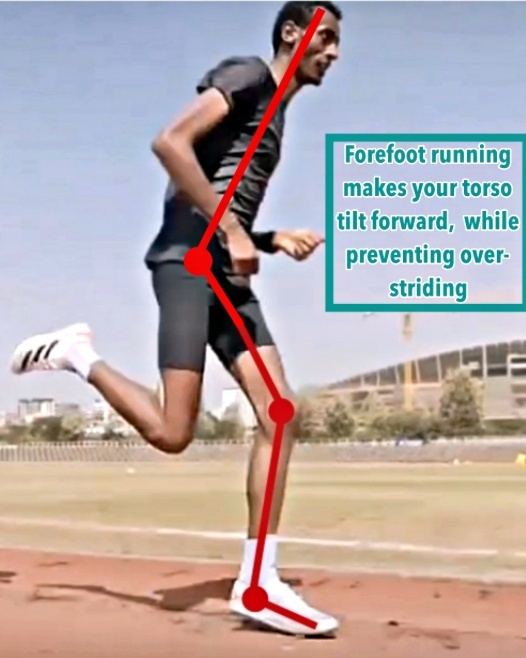
More experienced forefoot runners, especially those who run barefoot, don’t experience toe nerve entrapment injuries because they don’t use their toes for propulsion like heel strike runners do.
You can easily achieve the same positive mechanical outcome that safeguards your toes; all you need to do is land with a forefoot strike, and your whole-body mechanics will fall into place, and you’ll notice that your toes will no longer be needed to push your body forward.
Unsure how to land properly on your forefoot? Check out my YouTube video, here, where I clearly how exactly how you should be landing on your forefoot and why!

References:
Baxter D. Functional nerve disorders in the athlete’s foot, ankle and leg. Instr Course Lect 1993;42:185–94.
Peck et al. Neuropathy in runners. Clin Sports Med, 2010 (29):437-457.
Smith J, Dahm D. Nerve entrapments. In: O’Connor F, Wilder R, editors. The textbook of running medicine. New York: McGraw-Hill; 2001. p. 257–72.
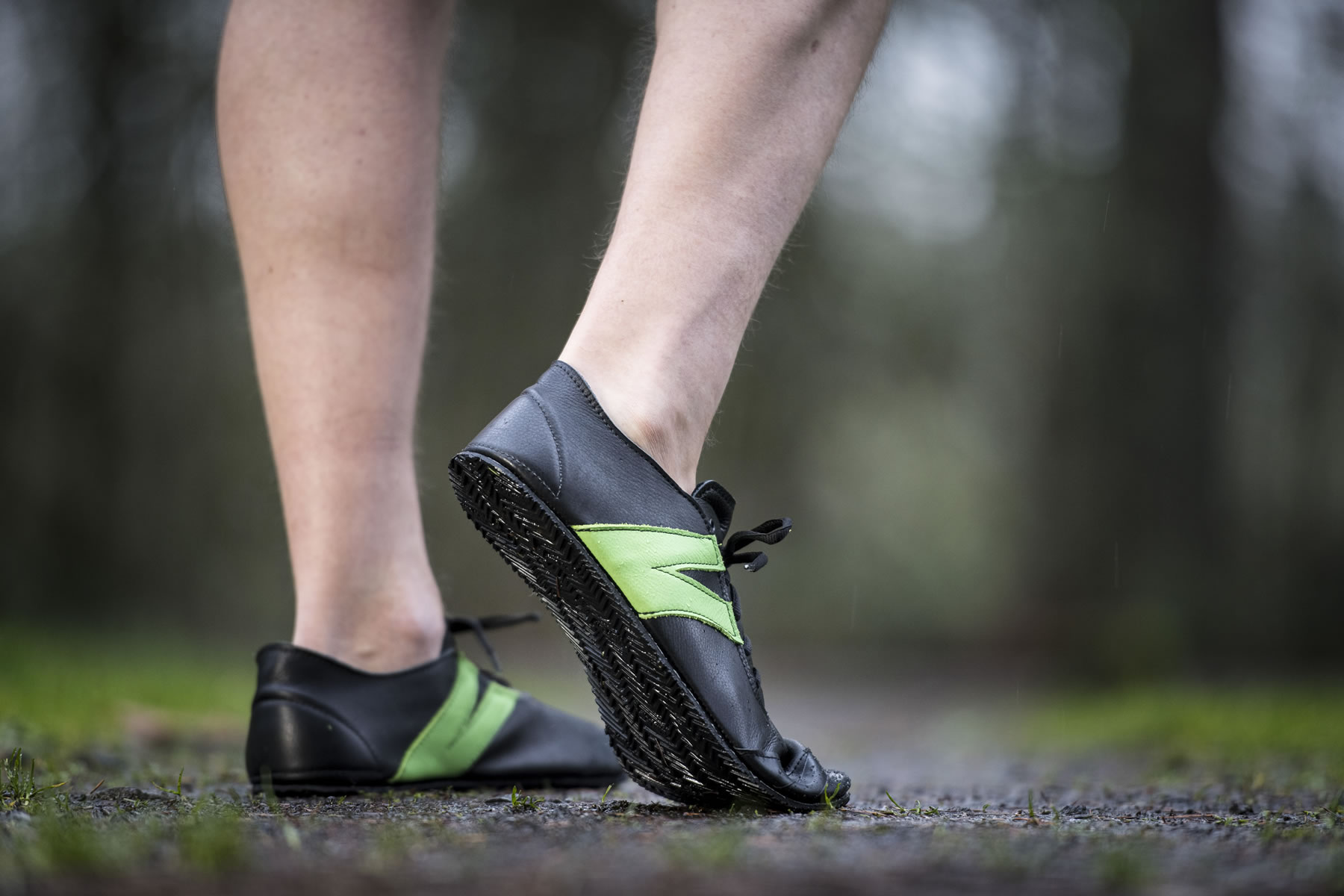
If you’d like, you can support Run Forefoot and help keep it going by making a donation in any amount of your choosing:

Or, you can support Run Forefoot by shopping at the BEST Barefoot Shoe Brands, and be sure to bookmark these links 🙂
Lonowear: https://lonowear.com/?ref=cedsholh
Saguaro: https://www.saguaro.com/?ref=9bVA8fEkmDvB-I
Vibram FiveFingers: https://www.anrdoezrs.net/click-7600968-11372648
Vivobarefoot: https://amzn.to/3vycQOY
Be Lenka: https://www.tkqlhce.com/click-7600968-13947200
Xero Shoes: https://xeroshoes.com/go/Run_Forefoot
Iguaneye: https://www.iguaneye.com/?ref=8tfXVc92
Soft Star Shoes: https://shrsl.com/3mp1b
Wilding Shoes: https://bit.ly/3lIygQP
Bretta Riches
BSc Neurobiology; MSc Biomechanics candidate, ultra minimalist runner & founder of RunForefoot. I was a heel striker, always injured. I was inspired by the great Tirunesh Dibaba to try forefoot running. Now, I'm injury free. This is why I launched Run Forefoot, to advocate the health & performance benefits of forefoot running and to raise awareness on the dangers of heel striking, because the world needs to know.
Latest posts by Bretta Riches (see all)
- Can You Run In Barefoot Shoes? Yes, But DON’T Heel Strike! - 21/07/2024
- Why Cushioned Running Shoes Are Really Bad for Your Feet - 19/07/2024
- Do Cushioned Running Shoes Cause Injuries? - 17/07/2024

